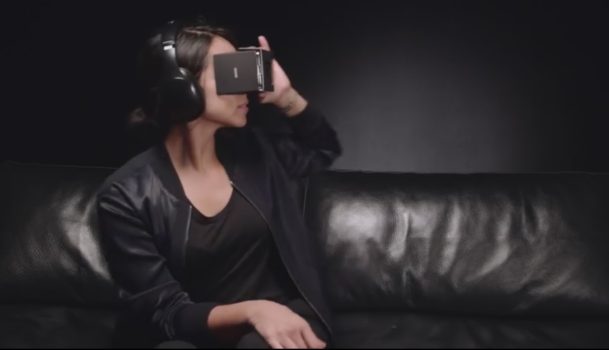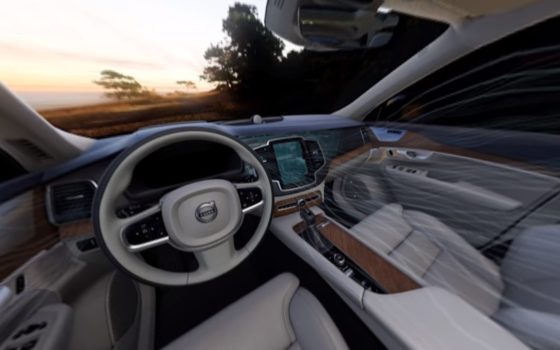
Low-cost virtual reality viewers — some made out of cardboard — are a minimal investment from consumer standpoint or from a company who would like to distribute their virtual reality experiences themselves. A user already has the hardware in the pocket, because the only other thing you need to do to play a VR app or see a monoscopic 360-degree video is your smartphone.
The first massive introduction of VR, was the partnership with New York Times, where Google Cardboard has been distributed to 1.2 million newspaper subscribers.Â
Since, several other companies have followed suit with successful marketing campaigns that used low-cost virtual reality viewers.
The launch of the Volvo XC90
Volvo isn’t necessarily known for being at the forefront of technological breakthroughs. They are known as a reliable, steady and robust manufacturer. However, that changed with the new model of the XC90 SUV, hitting the platform of Los Angeles 2014 auto show.
The XC90 is targeted for younger buyers who are interested in buying their first luxurious car, and it needed a new kind of marketing campaign. The genius idea was to let the guest drive the car. Well, you can’t usually drive the car at an auto show. But Volvo made it work.
Volvo hired the team at Framestore to create a fully immersive experience, which included custom virtual reality apps for both the iPhone and Androids,Â
Test driving a car through virtual reality makes a lot of sense. It is great to see Volvo make an app to support the launch of their XC90 SUV. Â It puts you in the cockpit and takes you on an idyllic ride through the country.Â
The marketing campaign resulted in 173 million impressions, 51,000 inquiries for more information and 28,000 app downloads.

In addition, there were more than 1,500 media articles about the XC90. Coverage expanded beyond auto publications and included outlets focused on luxury, technology, and business, such as Monocle, Surface, Architectural Digest, Bloomberg, Elle Décor, Departures, The Wall Street Journal, Wired, Business Insider, and Popular Science.
By the end of 2015, U.S. XC90 sales reached 12,665 units sold, representing 18 percent of total U.S. sales. In 2016, sales surged with a 412 percent increase in units sold from January through September, compared to the year prior, and 41 percent of all Volvos sold in the U.S. have been XC90s.
Earlier this spring, Volvo released a 360-degree video of the XC90 virtual reality experience, which you can view below in the browser, a mobile device, or on any virtual reality headset.
You can read more about Volvo and 11 other companies that conducted successful marketing campaigns using virtual reality in the book How to Win at Virtual Reality Marketing.
- How to win at virtual reality marketing - June 15, 2017
